In 2020, EU27 citizens and businesses owned 228 million water heaters, producing almost 5.2 billion cubic metres of hot water (at 60 °C) for showers, baths and taps. This is an average of 32 litres per capita per day, compared to 20 litres in 1990. For 2030 this is expected to remain fairly constant at 33 litres per day. Hot water consumption per capita varies greatly within the EU, with the Scandinavians using twice as much and Mediterranean countries using considerably less than the EU average. Roughly three quarters of the hot water volume is consumed in private households, with the service sector using the rest. Water heaters take up as much as 6% of the total EU primary energy consumption.
2013 two different sets of Ecodesign and Energy Label regulations entered into force: one set for dedicated water heaters and one set for combi boilers
Examples of water heaters

Source: estimations from the Ecodesign Impact Accounting Overview Report 2024
Scope
The following table shows some examples of products in scope and out of scope in the Ecodesign Regulation:
| In Scope | Out of Scope |
|---|---|
|
|
Check the complete list in the Ecodesign Regulation and Energy Labelling Regulation.
Ecodesign Requirements
The regulations set ecodesign requirements on:
- energy efficiency
- nitrogen oxide emission levels
- volume for storage water heaters
- heat losses from hot water storage tanks
Energy Label
A new space or water heater comes with an energy label showing its energy efficiency class. For individual products, ratings go from G (least efficient) to A++ (most efficient). It is also possible to buy a combination of technologies, such as a boiler with a solar hot water storage tank, in order to reach an A+++ energy efficiency rating.
The European Product Registry for Energy Labelling (EPREL) offers more detailed information on models placed on the EU market.
| Understanding the Water Heater Energy Label | |
|---|---|
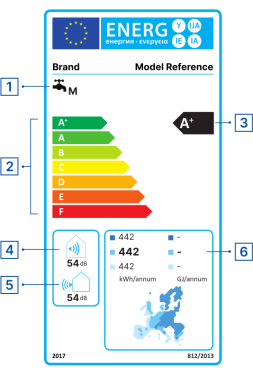 |
|
Packages
Water heaters include packages. A package of a wate heater, temperature control and solar device means a package designed either by manufacturers or by installers containing a water heater and possibly also containing a supplementary water heater, indoor temperature controls and solar thermal panels. Packages in EPREL are offered by manufacturers. Installers can also design packages on the basis of components available in EPREL.
Consult the Packages of water heaters in EPREL.
Consult the water heater package components in EPREL: Hot water storage tanks, solar devices.
- Use the controls of your water heater to adapt the temperature levels to your needs.
- Heating above 50 °C comes with higher risks of burns.
- High water temperature also means more energy consumption.
- Bacteria like legionella may be growing in mid temperature hot water storages. To limit risk for health, it is necessary from time to time and also systematically when your water heater was not used for a long period (e.g. after vacation), to increase the temperature for a short period of time at 65 °C to kill the bacteria.
- Use your water heater’s time-controlled hot water generation ability. For instance, when not at home, you may want to stop the production. If your installation has circulation of hot water, make sure it only runs at times you are likely to use hot water.
- Also think to install individual small water heaters for taps and sinks with limited needs and located far away from main use (bath, kitchen).
- Use hot water efficiently, it is a precious resource. You can save water and energy by installing water efficient taps and showerheads, or a shower heat recovery device.
Highlights
Energy efficient household space and water heaters can save European consumers over €60 billion by 2020. For example, if your home is equipped with a conventional gas boiler using 20 MWh of energy per year, a new condensing gas boiler can save you €275 per year. A new boiler will pay back its original cost in just seven years while also reducing your energy consumption by more than 20%.
Energy efficient space and water heaters could save 600 TWh of electricity per year, avoiding the emission of 135 million tons of CO2.
Facts & Figures
This graphic shows the estimated sales, stock, energy consumption (primary, electric or fuel), greenhouse gas emissions, consumer expenses and business revenues for years 2010 and 2030. The estimated values inside the graph bars are those from the EIA ECO-scenario, they include the effects of Ecodesign and Energy Labelling measures.
The difference with the business as usual (BAU) scenario without these estimated measures is shown next to the graph bar. These figures indicate the estimated savings obtained due to the measures.
Product: Dedicated Water Heaters Measures: Regulation (EU) 814/2013, Regulation (EU) 812/2013 |
|---|
| The striped lines in the charts show the 'Effect of the Regulations' |
SALES (x1000 units) 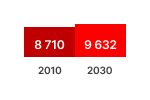 | STOCK (x1000 units) 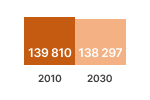 | Primary Energy (TWh/a)  |
GHG-EMISSION 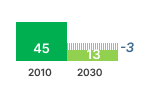 | CONSUMER EXPENSES 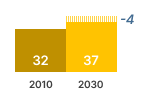 | REVENUES 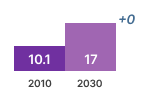 |
Product: Central Heating Combi, Water Heating Measures: Regulation (EU) 813/2013, Regulation (EU) 811/2013 |
|---|
| The striped lines in the charts show the 'Effect of the Regulations' |
SALES (x1000 units) 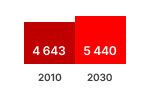 | STOCK (x1000 units) 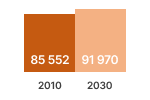 | Electricity (TWh/a) 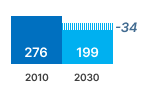 |
GHG-EMISSION 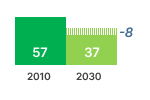 | CONSUMER EXPENSES 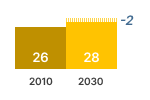 | REVENUES 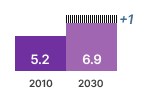 |
Source: estimations from the Ecodesign Impact Accounting Overview Report 2023
In 2020, 228 million Water Heaters were operating in the EU27, of which 60% dedicated water heaters (most electric) and 40% combi (space and water) heaters (most on gas).
They produced 5.2 billion cubic meters of sanitary hot water (at 60°C), which corresponds to an average of 72 litres per day per household. This increased from 55 litres per day in 1990.
In 1990, the average efficiency of newly sold water heaters was 42%. Without regulations this would have been 55% in 2020, but due to Ecodesign and Energy Labelling it was raised to 66% (+11%points; +20%). In 2030, a further increase to 71% efficiency is expected (more solar and heat pumps).

Source: estimations from the Ecodesign Impact Accounting Overview Report 2024
The Ecodesign and Energy labelling regulations saved 34 TWh of primary energy in 2020 (-6% compared to no measures), projected to increase to 73 TWh by 2030 (-15%).
The 2030 savings are 0.48% of the total EU27 primary energy consumption in 2020, and close to the consumption of Slovenia in that year.
The average household in 2030 is expected to save 20 kWh of electricity and 233 kWh of fuel.
Due to Ecodesign and Labelling measures, EU27 users saved € 1.4 billion on water heating in 2020 (-2.6% compared to no measures), expected to increase to € 5.0 billion in 2030 (-6.9%). 80% of the savings comes from dedicated water heaters; 20% from combi heaters.
In 2030, the annual household expenses for water heating decrease from € 274 to € 256.
Expected Savings
Consumer Expenditure Saving due to Ecodesign measures on water heating: additional acquisition costs and savings on energy costs
Water heater efficiency has been promoted through national rulemaking for years, now harmonised for the single market by EU Ecodesign and Energy labelling regulations. Due to the introduction of the EU Ecodesign and Energy Label, the consumer expenditure for water heating has decreased by 1.4 billion euros in 2020 compared to a 'Business as Usual' scenario without those measures. Due to the increasing energy prices, in 2023 the saving increased to € 2.4 bn and in 2030 this is projected to increase to € 4.8 bn. The direct annual savings per household are € 5 in 2020 and € 18 in 2030.
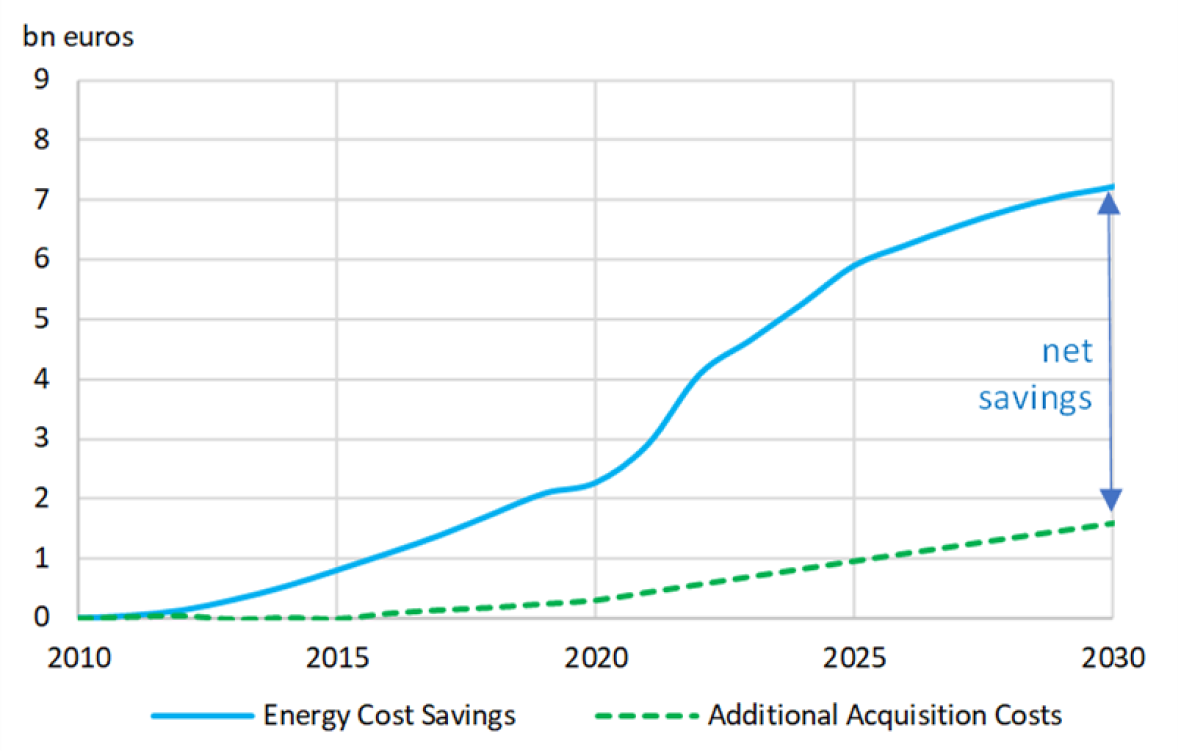
In 2020, despite a 63% higher hot water use, the energy consumption per capita increased only by 23% with respect to 1990. With a continued growth of hot water use, energy consumption per capita in 2030 is expected to be lower than in 1990 because primary energy efficiency of new water heaters will have more than doubled over that period. This is due to using more efficient combi boilers, more solar and – recently— heat pump water heaters. It is only because of the inertia of the market, i.e. it takes 18 years before all existing water heaters are replaced, that the efficiency of the average installed water heater is not even higher. E.g., the water heating efficiency of combi boilers selling in 2020 is 96%, but the average of installed boilers in the same year is only 79% as many older less efficient models are still in use.
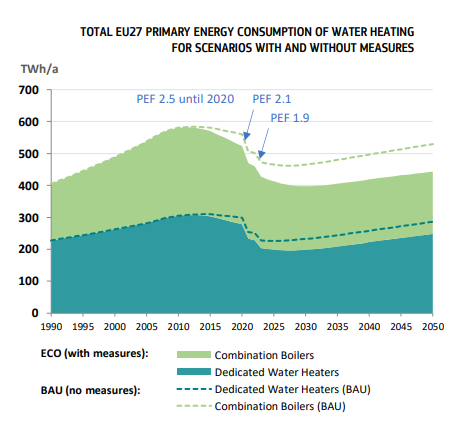
Source: estimations from the Ecodesign Impact Accounting Overview Report 2024

Suppliers
Suppliers shall ensure that:
(a) a printed label complying with the format and content of information set out in Annex III is provided for each each type of water heater conforming to the energy efficiency classes set out in Annex II, whereby: for heat pump water heaters, the printed label is provided at least in the packaging of the heat generator; for water heaters intended for use in packages of water heater and solar device, a second label complying with the format and content of information set out in Annex III is provided for each water heater;
(b) a product fiche, as set out in Annex IV, is provided for each type of water heater, whereby: for heat pump water heaters, the product fiche is provided at least for the heat generator; for water heaters intended for use in packages of water heater and solar device, a second fiche, as set out in Annex IV, is provided;
(c) the technical documentation, as set out in Annex V, is provided on request to the authorities of the Member States and to the Commission;
(d) any advertisement relating to a specific type of water heater model and containing energy-related or price information includes a reference to the energy efficiency class under average climate conditions for that model;
(e) any technical promotional material concerning a specific type of water heater model and describing its specific technical parameters includes a reference to the energy efficiency class under average climate conditions for that model.
(f) an electronic label in the format and containing the information set out in Annex III is made available to dealers for each type of water heater model conforming to the energy efficiency classes set out in Annex II.
(g) an electronic product fiche as set out in Annex IV is made available to dealers for each type of water heater model, whereby for heat pump water heaters models, the electronic product fiche is made available to dealers at least for the heat generator.
Documents
- 6 MARCH 2024
- 6 MARCH 2024
- 6 MARCH 2024

Dealers
Dealers shall ensure that:
(a) each type of water heater, at the point of sale, bears the label provided by suppliers in accordance with Article 3, as set out in Annex III, on the outside of the front of the appliance, in such a way as to be clearly visible; whereby any offer for a specific package includes the water heating energy efficiency and the water heating energy efficiency class for that package under average, colder or warmer climate conditions, as applicable, by displaying with the package the label set out in Annex III and providing the fiche set out in Annex IV, duly filled in according to the characteristics of that package;
(b) all types of water heaters offered for sale, hire or hire-purchase, where the end-user cannot be expected to see the water heater displayed, are marketed with the information provided by the suppliers in accordance with Annex VI, except where the offer is made through the internet, in which case the provisions in Annex X shall apply;
(c) any advertisement relating to a specific type of water heater model and containing energy-related or price information includes a reference to the energy efficiency class under average climate conditions for that model;
(d) any technical promotional material concerning a specific type of water heater model and describing its specific technical parameters includes a reference to the energy efficiency class under average climate conditions for that model.

Policy
Ongoing legislative work
Please check the ongoing initiatives on the Have your say portal.
Regulation (EU) 814/2013 of 2 August 2013 implementing Directive 2009/125/EC of the European Parliament and of the Council with regard to Ecodesign requirements for water heaters and hot water storage tanks Text with EEA relevance. Read more on Delegated Act.
Regulation (EU) 812/2013 of 18 February 2013 supplementing Directive 2010/30/EU of the European Parliament and of the Council with regard to the Energy Labelling of water heaters, hot water storage tanks and packages of water heater and solar device Text with EEA relevance.
Disclaimer: please pay attention to possible updates/changes as indicated in the Official Journal (green dot)

